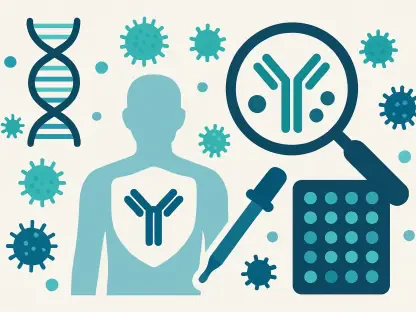The landscape of rare disease drug development is littered with clinical failures. For every success, countless promising compounds fail to demonstrate efficacy in late-stage trials, often due to the inherent challenges of studying small, heterogeneous patient populations. BridgeBio Pharma’s recent success with BBP-418 is more than just a win for patients with limb-girdle muscular dystrophy (LGMD). It is a strategic masterclass in de-risking development.
The company’s approach provides a compelling blueprint for the entire biopharma industry. By anchoring its Phase 3 trial in a robust, quantifiable biomarker directly linked to the disease’s pathology, BridgeBio has charted a clear path toward regulatory approval. Read on and learn how this approach also illuminates a more efficient way forward for genetic medicine.
A Breakthrough for a Devastating Disease
The experimental oral therapy, BBP-418, succeeded in a pivotal study for limb-girdle muscular dystrophy type 2I/R9, a progressive muscle-wasting condition with no approved treatments. An estimated 7,000 people in the United States and Europe live with the disease, facing a steady decline in muscle function, mobility, and respiratory capacity.
The late-stage trial met its primary objective, demonstrating a significant improvement in a key biological marker. Patients treated with BBP-418 showed a 17% mean increase in alpha-dystroglycan (αDG) glycosylation after three months, a level that was sustained for a full year. In contrast, the placebo group showed no change. This molecular improvement was supported by clinically meaningful benefits across all key secondary endpoints, including measures of walking ability and lung function.
The Science: Fixing the Molecular Shock Absorber
LGMD2I/R9 is a dystroglycanopathy, a class of genetic disorders caused by defective glycosylation of αDG. This protein is a crucial component of a complex that serves as a molecular shock absorber, linking the internal muscle cell cytoskeleton to the surrounding extracellular matrix. When αDG is not properly glycosylated, this connection becomes fragile, leaving muscle fibers vulnerable to damage from normal contraction.
BBP-418 is designed to address the root cause of the disease. The oral drug boosts the activity of the enzyme responsible for adding the necessary carbohydrate chains to the αDG protein. The trial data confirms this mechanism of action. Treated patients saw levels of glycosylated αDG climb from a baseline of approximately 23% to nearly 40%, a 1.8-fold increase that brings them closer to normal function.
A Masterclass in Biomarker-Driven Trial Design
The strategic brilliance of the BBP-418 trial lies in its primary endpoint. Instead of relying solely on functional outcomes, such as the North Star Ambulatory Assessment, which can be variable in slowly progressing rare diseases, BridgeBio focused on the root biological defect. The level of αDG glycosylation is a direct, quantifiable measure of the drug’s effect on the target.
This biomarker-led strategy accomplishes several critical goals:
Reduces Ambiguity: It provides a clear, objective signal of biological activity, minimizing the “noise” often associated with functional endpoints in small patient populations.
Accelerates Timelines: A significant change in a biomarker can often be detected much faster than a meaningful change in physical function, shortening trial duration.
Builds a Coherent Narrative: By demonstrating that the drug corrects the core molecular flaw, BridgeBio can then link this biological repair to the observed functional improvements, creating a powerful story for regulators.
This approach is becoming a hallmark of successful development in the field of genetic medicine. Fewer than 10% of the more than 7,000 known rare diseases have an approved treatment. For many, the path to approval will depend on identifying and validating surrogate endpoints, such as the one used by the biopharma leader.
From Clinical Win to Commercial Reality
With positive data in hand, BridgeBio is preparing for discussions with the Food and Drug Administration and plans to submit an approval application in the first half of 2026. The therapy has the potential to become the first-ever approved treatment for this form of limb-girdle muscular dystrophy, targeting a market opportunity that analysts estimate could exceed $1 billion.
The company’s market value has already experienced significant growth due to the success of its cardiac drug, Attruby. An approval for BBP-418 would further solidify its position as a leader in genetic diseases and accelerate its path to profitability.
Still, the road ahead involves navigating the complex commercial landscape of rare diseases. Success will require more than just regulatory approval. It demands a sophisticated strategy for patient identification, physician education, and securing market access with payers who are increasingly scrutinizing the high cost of genetic therapies.
The Regulatory Question: Accelerated or Full Approval?
A key question facing BridgeBio is whether the data package will support a full approval or an accelerated one. An accelerated approval is often granted based on a drug’s effect on a surrogate endpoint, with the manufacturer required to confirm clinical benefit in post-marketing studies.
Given that the biopharma leader has already collected 12 months of data showing statistically significant improvements in functional outcomes, the company has a strong case for full approval. The CEO of ML Bio Solutions, the BridgeBio subsidiary developing the drug, expressed confidence that the “preponderance of evidence” will be persuasive. The strength of both the biomarker and the functional data “exceeded Wall Street’s expectations,” according to a note from Mizuho Securities.
This robust package could convince regulators that the observed clinical benefits are durable and directly linked to the drug’s mechanism. The global market for treating rare diseases was valued at approximately USD 216.24 billion in 2024. It is expected to grow to USD 374.39 billion by 2030, with a compound annual growth rate of 11.6% from 2025 to 2030. This increase is likely to occur because numerous new products are in development and are expected to be launched soon.
Guidelines for Effective Research Practices
BridgeBio’s success with BBP-418 offers a clear, actionable playbook for other biopharma companies tackling rare genetic diseases. Moving forward, leaders can apply these principles to increase their own probability of success.
Anchor the Trial in a Core Biomarker: Identify a quantifiable biological marker that is central to the disease’s pathology. Design the trial to demonstrate a clear and significant change in this marker as the primary measure of success.
Connect Biology to Function: Do not rely solely on the biomarker. Build a comprehensive data package that robustly links the change in the surrogate endpoint to clinically meaningful improvements in how patients feel, function, and survive.
Engage Regulators Early and Often: Proactively discuss the proposed biomarker strategy with the U.S. Food and Drug Administration and other global regulatory bodies. Secure alignment on the endpoint’s validity before launching a costly late-stage trial. This dialogue is essential for clarifying the path to either accelerated or full approval.
By following this blueprint, the biopharma industry can move beyond simply hoping for a positive result and start engineering clinical success.
Conclusion
In conclusion, BridgeBio Pharma’s success with BBP-418 marks a pivotal moment not only for patients who have limb-girdle muscular dystrophy but also for the broader landscape of rare disease drug development. By leveraging a biomarker-driven approach, the company has not only demonstrated the potential for significant clinical benefits but has also set a new standard for trial design in genetic medicine. As the biopharma industry grapples with the complexities of rare diseases, its strategy offers a promising roadmap for navigating the challenges of small, heterogeneous patient populations while de-risking the development process.
The anticipated submission to the U.S. Food and Drug Administration for approval in the near term holds the promise of transforming the lives of thousands affected by limb-girdle muscular dystrophy. However, the journey does not end with regulatory approval; successful market entry will require careful planning and execution to address the intricacies of patient access and pricing. As other companies adopt BridgeBio’s innovative methods, the future of rare disease treatments may be brighter than ever, underscoring the importance of science-driven trial strategies in unlocking new therapies for patients in need.









